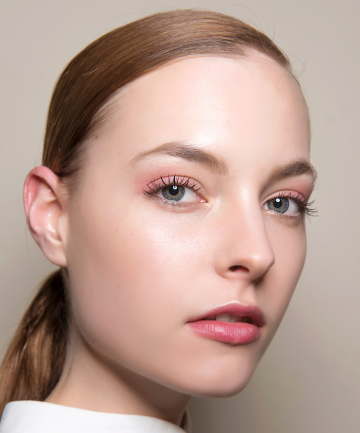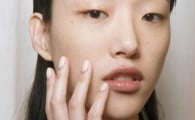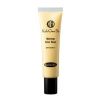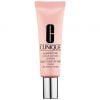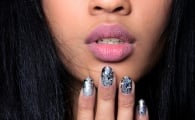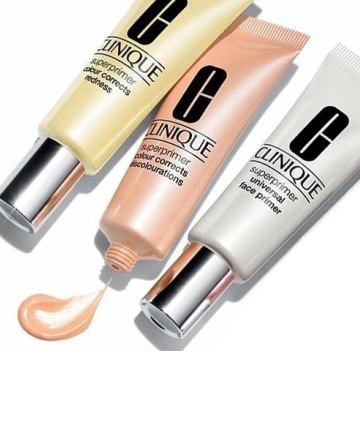Makeup
Everything You Need to Know About Color-Correcting Primers: A PrimerExperts give us the 411 on how to use color-correcting primers to neutralize dark spots, redness and more for flawless-looking skin. |
First, let's get one thing straight: color-correcting primers are awesome, but not everyone needs them. While it's imperative to always prime skin before makeup application so you get a smooth canvas for even coverage (and a boost in staying power), it's important to identify what it is you need from a primer before application.
"This seems like an obvious place to start, but not everyone necessarily needs a color-correcting primer — it may be that what you need is a pore- or line-blurring primer and your color is good as it is," says M.A.C. global senior artist Caroline Hernandez. So how do you know if you need one? "To help you decide, look for things like redness, dull skin, overly sallow skin, darker areas that look gray or ashy when makeup is applied to certain areas, often the chin in this case."
For those who do find they have a color issue that needs balancing, color-correcting primers will work better than traditional ones as they'll cut down the amount of foundation you'd normally have to use. "Using a color-correcting primer will allow you to correct concerns you have before applying your foundation/concealer, allowing you to use less product on top, which leaves you looking more natural and perfected," explains Hernandez. That said, picking the right color is key.
Color-correcting primers are available in a handful of shades and each one targets a different issue, from toning down redness to brightening up dullness on olive tones. "Your color choice has to correlate with your issues, it's very specific, so you have to identify your needs first," says celebrity makeup artist and founder of Scandic Botanica Souraya Hamdi. While they may look bright in the bottle, once applied, the primers should blend into skin translucently — unless you pick the wrong one, in which case these color correctors can be visible even through foundation.
"Color-correcting primers can be scary because you're purchasing a color that's not skin tone to go all over your face!" says Smith & Cult beauty ambassador Elena Miglino. The easiest way to start picking the perfect primer for your needs is to take a look at your skin and figure out the color you are trying to eliminate. "Get on the internet, google a color wheel and start there. Opposites on the color wheel are the easiest way to determine the shade you need. For example, if you're trying to hide your rosacea or your pink cheeks, grab a green primer."
Image via Imaxtree
This article originally appeared on TheFashionSpot.com
SEE NEXT PAGE: Looking for a cheat sheet?
"This seems like an obvious place to start, but not everyone necessarily needs a color-correcting primer — it may be that what you need is a pore- or line-blurring primer and your color is good as it is," says M.A.C. global senior artist Caroline Hernandez. So how do you know if you need one? "To help you decide, look for things like redness, dull skin, overly sallow skin, darker areas that look gray or ashy when makeup is applied to certain areas, often the chin in this case."
For those who do find they have a color issue that needs balancing, color-correcting primers will work better than traditional ones as they'll cut down the amount of foundation you'd normally have to use. "Using a color-correcting primer will allow you to correct concerns you have before applying your foundation/concealer, allowing you to use less product on top, which leaves you looking more natural and perfected," explains Hernandez. That said, picking the right color is key.
Color-correcting primers are available in a handful of shades and each one targets a different issue, from toning down redness to brightening up dullness on olive tones. "Your color choice has to correlate with your issues, it's very specific, so you have to identify your needs first," says celebrity makeup artist and founder of Scandic Botanica Souraya Hamdi. While they may look bright in the bottle, once applied, the primers should blend into skin translucently — unless you pick the wrong one, in which case these color correctors can be visible even through foundation.
"Color-correcting primers can be scary because you're purchasing a color that's not skin tone to go all over your face!" says Smith & Cult beauty ambassador Elena Miglino. The easiest way to start picking the perfect primer for your needs is to take a look at your skin and figure out the color you are trying to eliminate. "Get on the internet, google a color wheel and start there. Opposites on the color wheel are the easiest way to determine the shade you need. For example, if you're trying to hide your rosacea or your pink cheeks, grab a green primer."
Image via Imaxtree
This article originally appeared on TheFashionSpot.com
SEE NEXT PAGE: Looking for a cheat sheet?









